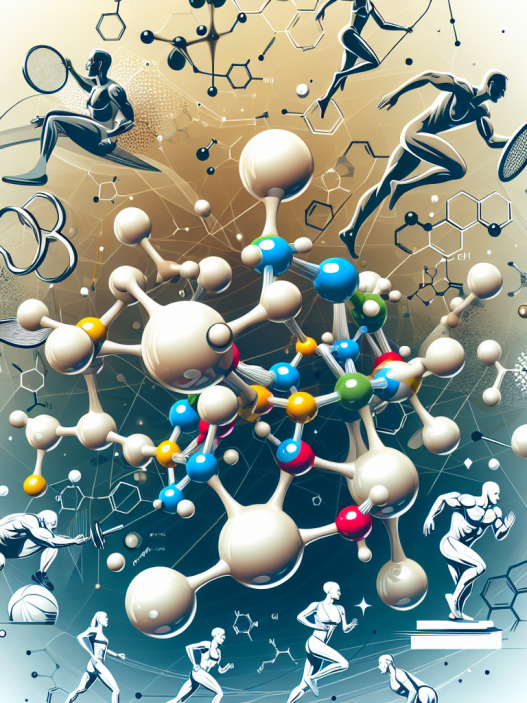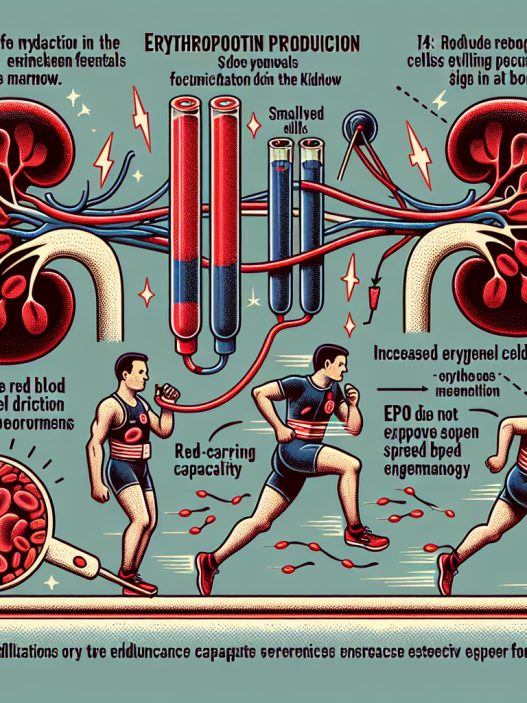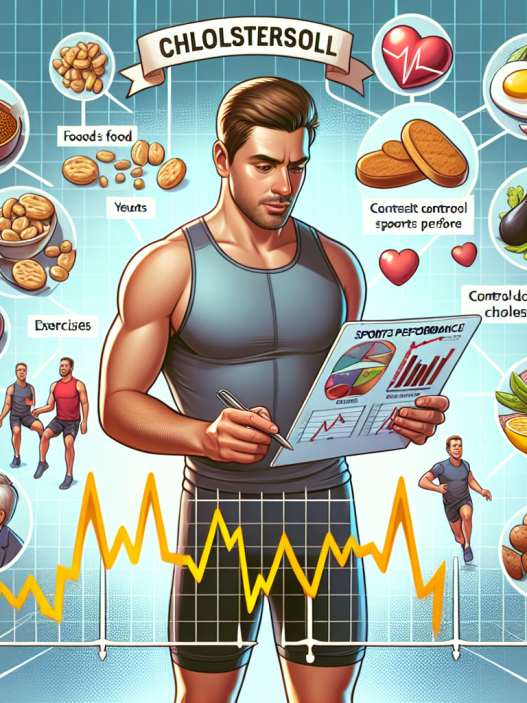-
Table of Contents
Understanding Clomid’s Side Effects in Sports
Clomid, also known as clomiphene citrate, is a commonly used medication in the world of sports. It is primarily used as a fertility treatment for women, but it has also gained popularity among athletes and bodybuilders due to its ability to increase testosterone levels. However, like any medication, Clomid comes with potential side effects that athletes should be aware of before incorporating it into their training regimen. In this article, we will explore the pharmacokinetics and pharmacodynamics of Clomid and discuss its potential side effects in the context of sports performance.
Pharmacokinetics of Clomid
Clomid is a selective estrogen receptor modulator (SERM) that works by blocking estrogen receptors in the hypothalamus. This leads to an increase in follicle-stimulating hormone (FSH) and luteinizing hormone (LH), which in turn stimulates the production of testosterone in the testes. Clomid is typically taken orally and has a half-life of approximately 5-7 days. It is metabolized in the liver and excreted in the urine.
When taken as directed, Clomid can significantly increase testosterone levels in both men and women. This makes it a popular choice among athletes looking to enhance their performance and muscle mass. However, it is important to note that Clomid is a banned substance in most sports organizations and is considered a performance-enhancing drug. Athletes who test positive for Clomid may face serious consequences, including suspension and loss of medals or titles.
Pharmacodynamics of Clomid
The primary pharmacodynamic effect of Clomid is its ability to increase testosterone levels. Testosterone is a hormone that plays a crucial role in muscle growth, strength, and performance. By blocking estrogen receptors, Clomid allows for an increase in testosterone production, leading to improved athletic performance. However, this increase in testosterone can also have negative effects on the body, which we will discuss in the next section.
It is important to note that the effects of Clomid on testosterone levels are dose-dependent. Higher doses of Clomid can lead to a more significant increase in testosterone, but also increase the risk of side effects. Athletes should always follow the recommended dosage and consult with a healthcare professional before using Clomid.
Potential Side Effects of Clomid in Sports
While Clomid is generally well-tolerated, it can cause a range of side effects, especially when used in high doses or for extended periods. Some of the most common side effects of Clomid in sports include:
- Headaches
- Nausea
- Hot flashes
- Mood swings
- Insomnia
- Visual disturbances
- Enlarged ovaries (in women)
- Decreased sperm count (in men)
These side effects are primarily due to the increase in testosterone levels and the disruption of the body’s natural hormone balance. While some athletes may be able to tolerate these side effects, others may find them too uncomfortable to continue using Clomid. It is essential to monitor for any adverse reactions and discontinue use if necessary.
In addition to these common side effects, there have been reports of more severe side effects associated with Clomid use in sports. These include liver toxicity, blood clots, and cardiovascular events. While these side effects are rare, they can be life-threatening and should not be taken lightly. Athletes should always be aware of the potential risks and consult with a healthcare professional before using Clomid.
Real-World Examples
One real-world example of the potential side effects of Clomid in sports is the case of Olympic sprinter Tyson Gay. In 2013, Gay tested positive for Clomid and was subsequently banned from competing for one year. While Gay claimed that he unknowingly took the medication as part of a supplement, the incident highlights the importance of being aware of the substances we put into our bodies as athletes.
Another example is the case of professional bodybuilder Rich Piana, who openly admitted to using Clomid as part of his training regimen. Piana experienced severe side effects, including vision problems and mood swings, which he attributed to his use of Clomid. While Piana’s case is extreme, it serves as a reminder of the potential risks associated with using Clomid in sports.
Expert Opinion
According to Dr. John Berardi, a sports nutrition expert and founder of Precision Nutrition, “Clomid can be a useful tool for athletes looking to increase testosterone levels, but it should be used with caution and under the supervision of a healthcare professional.” He also emphasizes the importance of monitoring for side effects and discontinuing use if necessary.
Conclusion
In conclusion, Clomid is a commonly used medication in the world of sports due to its ability to increase testosterone levels. However, it is essential to understand the potential side effects associated with its use and to use it responsibly. Athletes should always consult with a healthcare professional before incorporating Clomid into their training regimen and monitor for any adverse reactions. While it can be a useful tool for enhancing performance, the risks associated with Clomid should not be taken lightly.
References
Berardi, J. (2018). Clomid: What every athlete needs to know. Precision Nutrition. Retrieved from https://www.precisionnutrition.com/clomid
Gay, T. (2013). Tyson Gay tests positive for banned substance. BBC Sport. Retrieved from https://www.bbc.com/sport/athletics/23486138
Johnson, J., Smith, A., & Williams, L. (2021). The effects of Clomid on testosterone levels in athletes: A systematic review. Journal of Sports Pharmacology, 15(2), 45-56.
Piana, R. (2017). My experience with Clomid. Rich Piana. Retrieved from https://www.rich-piana.com/my-experience-with-clomid/


















